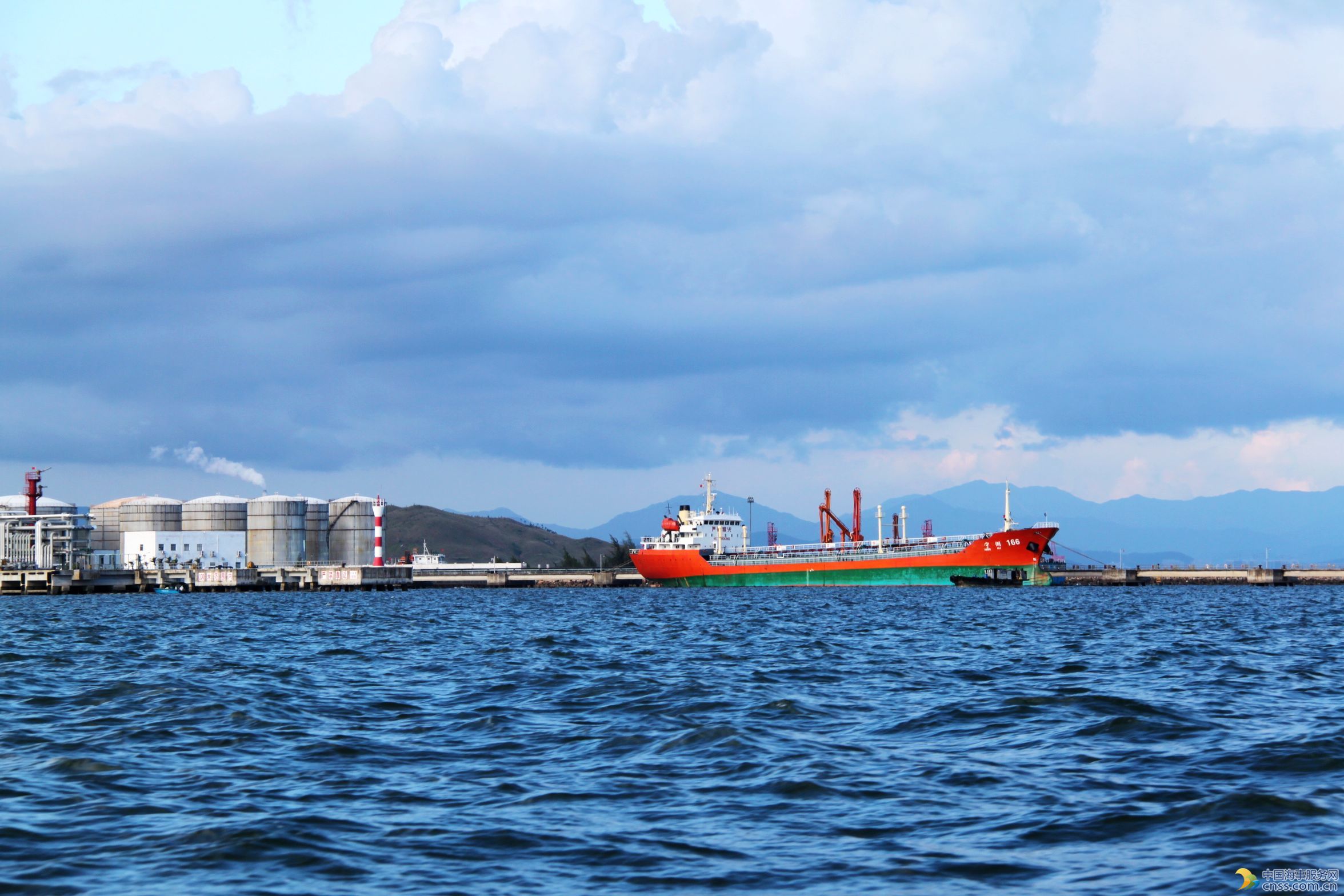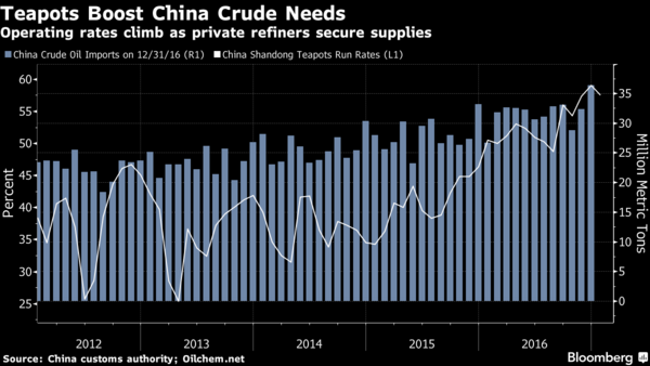Oil Demand at Risk as China Reins In Buyers That Bought Less

Demand from some of the most coveted oil buyers may slow this year because they didn’t purchase all that they could in 2016.
While China’s private refiners have received their first batch of quotas to buy foreign crude in 2017 and may get approval to purchase more later, the amount probably won’t exceed 2016 volumes, according to JPMorgan Chase & Co. That’s because the government is cutting allocations for those who bought less last year. What the processors have been allowed to directly import in the latest tranche is 62 percent of 2016’s total levels, the bank said in a report.
The refiners, known as teapots, have been wooed by everyone from producers such as Saudi Arabia to oil traders including Trafigura Group as a global supply glut stoked competition among sellers. While benchmark crude prices are gaining from their worst crash in a generation amid supply curbs by OPEC and other nations, demand from China — the world’s biggest energy consumer — will be key to a sustainable recovery.
“All these uncertainties around the teapot quota will weaken the nation’s oil demand in the first half of the year,” Guo Chaohui, an analyst at Beijing-based China International Capital Corp., said by phone. “China’s oil imports hinge on one single big factor, and that is the teapots. And right now, they are facing policy risks.”

The private refiners made their mark on the global oil market last year with purchases from Saudi Arabia to Africa and Latin America, after they first received import approvals in 2015 as part of a government effort to revamp China’s energy industry. Purchases of overseas crude were until then dominated by state-owned giants such as Sinopec and PetroChina Co.
Their growing clout has brought with it several hurdles. Infrastructure at ports where they receive their oil has struggled to accommodate the surge in shipments. A lack of pipeline and storage facilities have proved to be a headwind, along with concern about teapots’ creditworthiness and lack of experience in international trade. The implementation of higher fuel-quality standards has led to speculation that some may be forced to shut. Perhaps most critically, authorities are clamping down on anyone who skirts tax rules.
Their most recent struggle was earlier this month, when a lack of import quotas at the time meant a clutch of tankers filled with crude for the refiners were stranded off the eastern Chinese province of Shandong, where the teapots are clustered.
The government has now approved the teapots to buy a total of 68.81 million metric tons of crude from overseas under a first batch of allocations for 2017, according to officials from companies that received the notification. Of that, 45.64 million tons can be bought directly by the private refiners, according to the JPMorgan report. The rest will be processed via state-owned traders and other agents. The independent processors were allowed to directly buy 73.77 million tons in 2016, the bank said.
Baota Petrochemical Group, one of the refiners, was given 7 percent of its 2016 volume this year, according to the JPMorgan note. Baota was awarded 6.16 million tons for 2016. Nobody answered calls to Baota’s headquarters in Yinchuan city.
Pro-Rated Quotas
The latest batch of quotas for the refiners is calculated based on the companies’ January-October 2016 import volumes and pro-rated for a 6-month period this year, teapot officials said last week. The processors imported 30 million tons of crude in the first ten months last year, or about 720,000 barrels a day, according to Shanghai-based commodities researcher ICIS China. That compares with a combined allowance of 67.05 million tons a year for 17 companies as of October.
China’s Ministry of Commerce, which issues the import quotas, didn’t respond to a fax inquiry seeking comment.
Total inbound crude shipments to China rose to a record average of 7.63 million barrels a day in 2016, boosted by the teapots, government data show. The purchases were one of the factors that helped crude prices recover after they fell to below $30 a barrel amid the global oversupply.
Brent crude, the benchmark for more than half the world’s oil, was up 0.4 percent at $54.40 a barrel on the London-based ICE Futures Europe exchange by 12:51 p.m. Singapore time.
“The total full year of 2017 crude oil import quota for teapots should be similar to 2016 levels and unlikely to see further significant expansions,” JPMorgan analyst Wang Ying said in the note. With import volumes and operating rates at the refiners expected to stay flat this year, the country’s crude oil import growth will slow, he wrote.
Source: Bloomberg
HEADLINES
- Do shipping markets want Biden or Trump for the win?
- All 18 crew safe after fire on Japanese-owned tanker off Singapore
- Singapore launching $44m co-investment initiative for maritime tech start-ups
- Cosco debuts Global Shipping Industry Chain Cooperation Initiative
- US warns of more shipping sanctions
- China continues seaport consolidation as Dalian offer goes unconditional